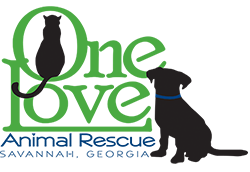Good oral health is something we’re sure you think about on a regular as a human. From brushing twice a day, to flossing and chewing gum to make sure everything is clean and fresh, taking care of your teeth is something that almost comes second nature. But do you ever stop to think about the oral health of your canine companion?
Think about it, your dog’s teeth and gums need to be kept healthy too and sometimes chews and kibble isn’t enough on their own. Plus, no one like stinky breath when they are getting kisses from fido. But if you have never tackled brushing a dog’s teeth, it may seem a little overwhelming. Not to fear! Dr. Zara Posener, Head Veterinary Surgeon at Village Vet, Southgate, has outlined some steps and helpful tips below to keep your canine in perfect oral health.
How to clean your dog’s teeth – a step by step guide for getting started
It’s best to brush your dog’s teeth daily, or at least every other day. Plaque can build up very quickly and brushing less than this will do very little to keep your dog’s mouth healthy.
When you first introduce teeth brushing to your dog, think of it as a form of training. Like other kinds of dog training it’ll take time for your dog to learn. Take it slowly, one step at a time. Each step can take several days or weeks for a dog to get used to. When training is going well, give your dog lots of praise or a nice treat, so he knows he has done a good job! If they start to show signs of resenting it simply try again another day.
1. Introduce the toothpaste
Warning: do not use human toothpaste – most toothpastes for us humans contain fluoride, which is toxic for dogs. Always make sure you use a specially made toothpaste that is suitable for dogs. They’re designed to be tasty so it’s worth finding a flavour your dog will enjoy. Why not start by letting your dog get used to the taste – you could try adding it to a bit of kibble or having them lick it off your fingers if you think that’ll be a more natural start for your dog.
2. Practice handling your dog’s mouth
Gently lift his lips every day, followed by a treat afterwards, so he knows that when his mouth is handled he is going to be rewarded. It is a great opportunity to examine his teeth and make sure there are no broken or unhealthy looking teeth.
3. Brushing the teeth
Put some toothpaste on the toothbrush, gently hold your dog’s muzzle closed to stop them chewing the brush and lift his top lip on one side to brush his canine tooth (the big long one). Repeat for the other side of your dog’s mouth. Work your way round the teeth each side of the canine tooth, brushing all the way round to the back of the mouth on the top and bottom jaw. On your first few attempts, you may only spend a few seconds brushing, but this can slowly be increased as your dog becomes accustomed to it. The inside surface of the teeth are usually cleaner, so unless your dog is very well behaved during brushing sessions, it’s probably not worth overly stressing your dog to clean these. Dog toothpaste has enzymes in it, which helps to clean the teeth in addition to the brushing action. Your dog’s tongue will help spread the toothpaste around the mouth, allowing the enzymes to work on all surfaces.
How to care for your puppy’s baby teeth
As any puppy parent will tell you, puppies love to chew, especially whilst they’re teething. It’s great to give them treats or toys to chew but always check these are safe for their puppy teeth – adult dog chews may be too tough and could cause a broken tooth. Always supervise your puppy when they are chewing to make sure they don’t choke on anything.
During their socialisation window (before a puppy is 16 weeks old) is a great time to start brushing their teeth. Although most puppies will lose their deciduous (puppy) teeth by the time they are 6 months old, getting them into a routine from a young age will help you to keep it up when they’re fully grown.
If you can’t brush your dog’s teeth, what other options are available?
Sometimes it can be difficult to brush your dog’s teeth. Thankfully, there are other options! Various alternatives are available to purchase to help you counter the difficulties and practicalities involved in brushing a dog’s teeth and help to prevent the buildup of plaque:
- Dental diets
- Drinking water additives
- Dental chews
- Powder food supplements
- Gels to rub onto teeth
Do you have any other tips or techniques to tackle canine oral health? Let us know in the comments below!
Original article: https://blog.dogbuddy.com/keep-dogs-teeth-clean-healthy/#.WRjvMVPyu8U



